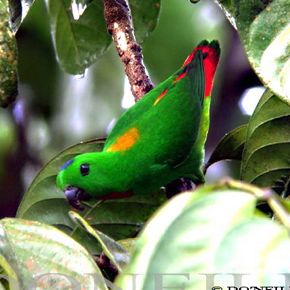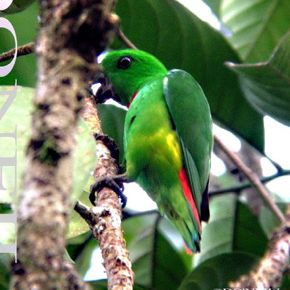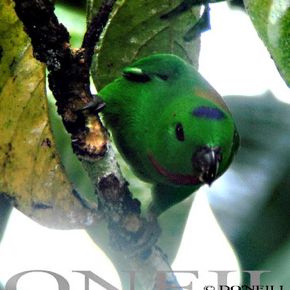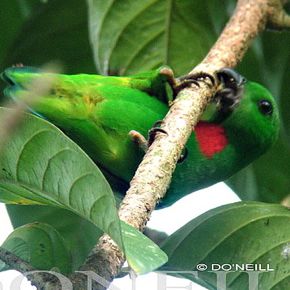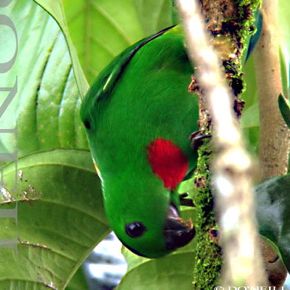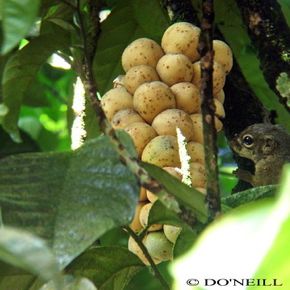“An old Chinese belief practiced by past generations has it that if an overdue fruiting tree refused to bloom and bear fruits, one way to get around it was to insult and ‘threaten’ the tree by the use of a cleaver, slashing the barks on its trunk and hexing it as well!
“Lo and behold, I’ve seen such unexplained practice seemed to have worked… in my own backyard during my youth days …at least!
“Similarly, would an orchard owner be annoyed to see an avenue of his priced Royal Thai hybrid dukong trees (Lansium domesticum) succumbed to daily visits of family pairs of foraging Blue-crowned Hanging Parrots (Loriculus galgulus) chewing and reducing its tree canopies bald?
“Usually in the mornings and after a rain shower, these noisy, whistling green jewels would show up and begin a ritual of bark gnawing and stripping, rendering the branches to eventually look rugged, scarred and bare (above).
“The image below-left shows fresh, opened wounds of the branch with cambium and pulp exposed leading to depletion of nourishment to the branch. Eventually, the branch dies usefully, reinventing itself to be recyclables to nesting insects, who in turn become victims of food providence to insectivores.
“In living up to its family name, ‘Hanging Parrot’ (Loriculus) here is a blurry swinging image of a hanging 12-14.5cm bird in feeding action on a clean, new branch like having a first gleeful bite on a sugarcane stick.. (above right).
“The agility of this species in upside down stance is shown in below-left. The foraging habits of the Blue-crowned Hanging Parrot appeared to further aid in tree pruning and stimulating of axillary growth of new branches and its fruiting process undeterred.
“These tropical and oval fruits, the size of lychees appear in clustered grape-like bunches. When ready for consumption, the skins turn yellow. Consuming the white, tangy sweet, morish and delicious fruits by the birds was not observed.
“I guess… the birds had to await the first inspection and tasting by resident squirrels, behaving like eunuchs of the Imperial Chinese Courts of ancient times (above right).”
Avian Writer Daisy O’Neill
Copyright article and images copy:
Courtesy of Daisy O’Neill Bird Conservation Fund


